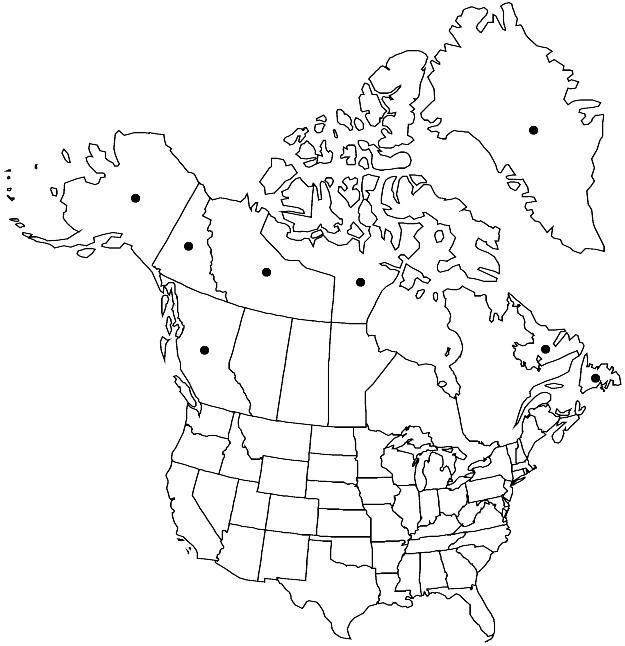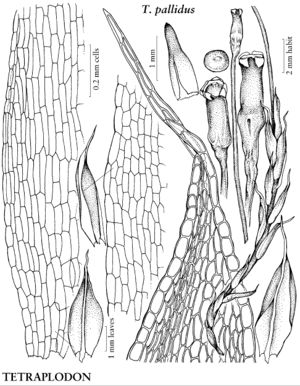Difference between revisions of "Tetraplodon pallidus"
Kongel. Norske Vidensk. Selsk. Skr. (Trondheim) 1893: 75. 1894.
FNA>Volume Importer |
imported>Volume Importer |
||
| Line 54: | Line 54: | ||
|publication year=1894 | |publication year=1894 | ||
|special status=Illustrated | |special status=Illustrated | ||
| − | |source xml=https:// | + | |source xml=https://bibilujan@bitbucket.org/aafc-mbb/fna-data-curation.git/src/bb6b7e3a7de7d3b7888a1ad48c7fd8f5c722d8d6/coarse_grained_fna_xml/V28/V28_17.xml |
|genus=Tetraplodon | |genus=Tetraplodon | ||
|species=Tetraplodon pallidus | |species=Tetraplodon pallidus | ||
Revision as of 22:42, 27 May 2020
Plants 2–4 cm, light green or yellow-green. Leaves ovate, concave, 2–3.5 mm; margins entire or nearly so; apex acuminate; costa ending in subula; distal laminal cells hexagonal, 30 µm. Sexual condition autoicous. Seta clear pale yellow to stramineous, 1–2 cm. Capsule not cleistocarpous, clear pale yellow to stramineous, long-ovate; hypophysis often narrower than urn, rarely broader; stomata confined to distal hypophysis; operculum bluntly conic. Calyptra conic-mitrate or cucullate. Spores 8 µm, smooth.
Phenology: Capsules mature summer.
Habitat: Caribou or muskox dung
Elevation: low to high elevations
Distribution

Greenland, B.C., Nfld. and Labr., N.W.T., Nunavut, Yukon, Alaska, n Europe.
Discussion
Tetraplodon pallidus and T. paradoxus often grow intermixed and can be distinguished by several characters (W. C. Steere 1977b). Tetraplodon pallidus has a large operculum that falls off exposing a broad, square-shaped mouth and well-developed, reflexed teeth, and its distal laminal cell walls are thin.
Selected References
None.
